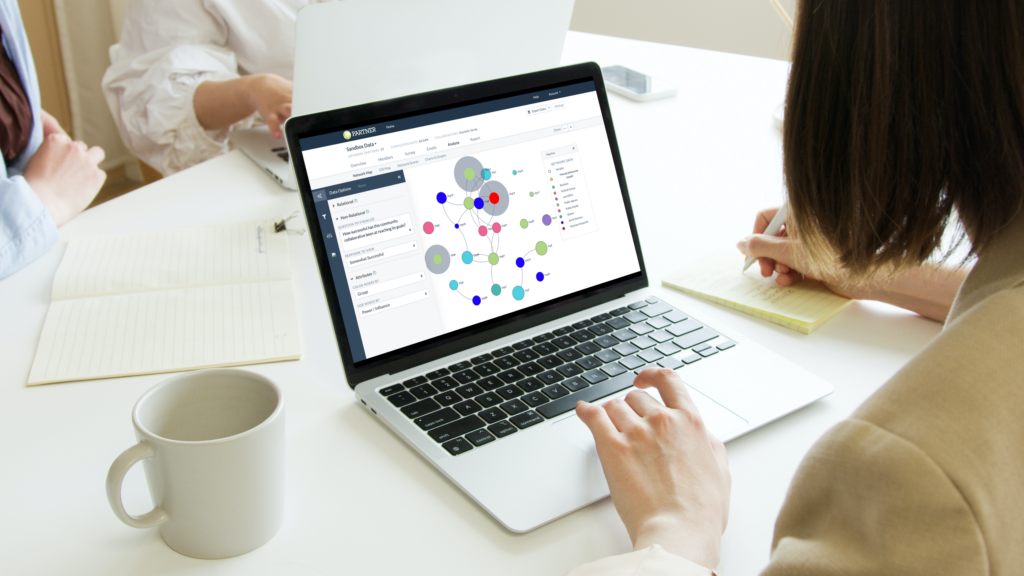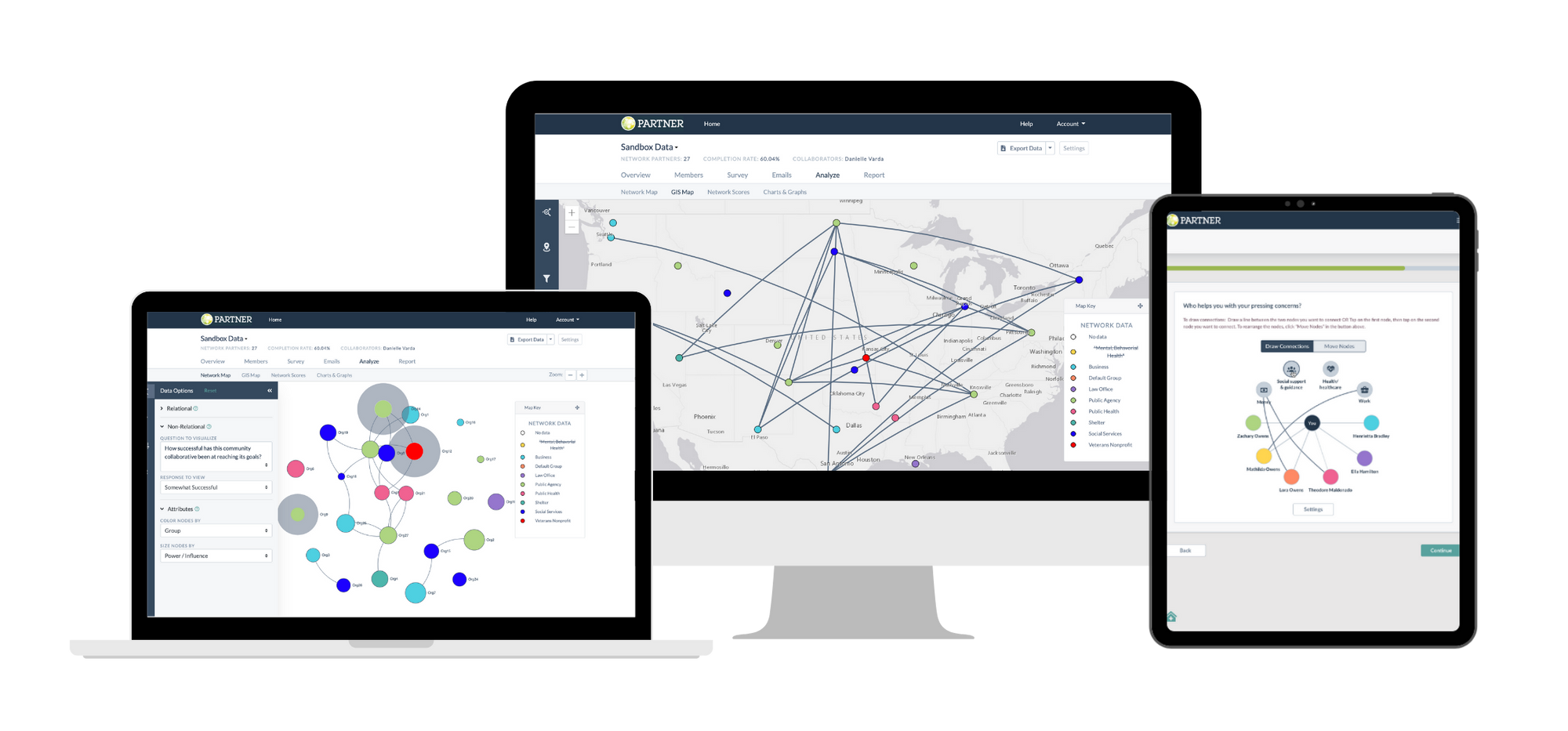
Let’s Practice Network Thinking
Using a network science lens can create powerful, actionable insights for building and leveraging networks effectively. For example, network analysis considers how network members view each other and how those perceptions lead to varying outcomes. This is one of the insights of a network way of thinking: acknowledging the importance of our perceptions of others – and the importance of their perceptions of us.
Let’s walk through a network thinking example adapted from an article in The Washington Post. The graph below demonstrates a community considering a vital issue: Are baseball caps fashionable?
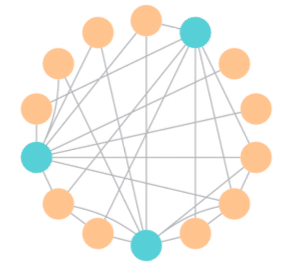
Each dot in the image represents a member of the group.
Two people who know each other are connected by a line.
Residents are debating an issue: Are baseball caps fashionable?
Each circle is colored based on that person’s stance on the issue.
Blue dots believe baseball caps are fashionable.
Orange dots believe the opposite; they are not.
The Importance of Perceptions in a Network: The Influence of Key Connections
The community will be voting on whether to consider baseball caps fashionable officially. A recent poll asked whether each person thought baseball caps would get a majority of support.
Each person based their response only on how the people they know would vote (excluding their own view). Did the poll find that the measure was expected to pass or fail?
Based solely on their friend networks, most people thought the measure would pass.
Wait, what?
This is surprising! Most people in the network do not think baseball caps are fashionable. However, most people’s friends do think they are fashionable.
For example, the figure on the right shows one person’s network. Of their five friends, three of them believe baseball caps are fashionable.
See the future below for an overview of what the network looks like to each person within it. It demonstrates how even a small group of people can have significant influence in a community depending on their connections.
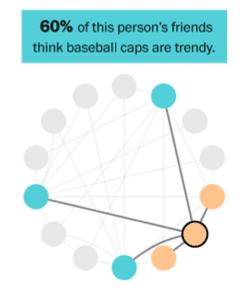
Applying Network Thinking to Your Own Formal and Informal Networks
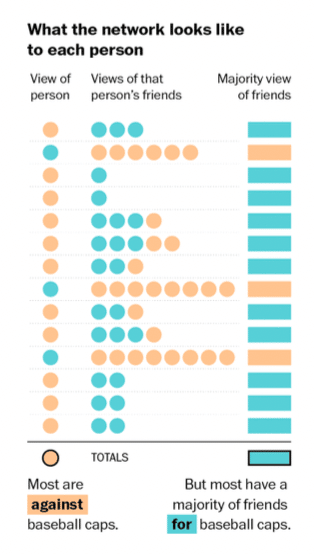
Though this example focused on baseball caps and fashion trends, we can imagine the role networks like this one play in other important issues.
For example, such a network demonstrates how social norms develop in a group even when most people disagree with them. It can also show us how critical information can spread rapidly through a community, starting with just a few well-connected individuals.
Your network is home to a variety of viewpoints and perspectives that operate in the same way. Take a moment to reflect on the formal and informal networks that influence our work.
- What role do group perceptions and key influencers play in changing opinions, building coalitions, sharing information, and advancing collective impact?
- How can you leverage this information to improve group norms and goals?
Using PARTNER CPRM to Measure Perceptions in Your Network
Many networks use PARTNER CPRM to measure and map their network members’ perceptions and identify critical nodes for disseminating information and influencing group opinions. For example, consider the PARTNER Network Map viewed from the CPRM ‘Explore Results’ Dashboard. It visualizes the network’s connections to show who is connected to whom, while the size and color of each node represent how each is perceived by others in the network.
Looking at this map, our partners can begin to ask themselves a series of questions:
- Consider your network connections: How do the perceptions of your friends, colleagues, and neighbors influence your perspective and behavior?
- What people or groups might think differently from you and your close connections?
- How can you learn about different perspectives among members of your network?
These are all areas for consideration when building more connections to be as efficient and strategic as possible in your network leadership.
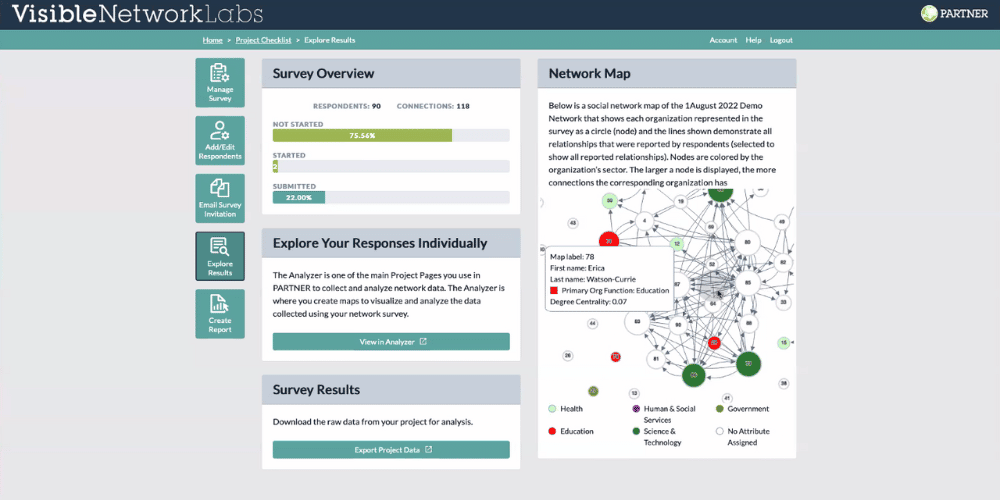
You Need Network Data to Engage in Network Thinking and Strategy
As both examples demonstrate, you can only analyze a network or engage in network thinking if you have collected network data – which requires the ability to measure and visualize the connections between partners in your network. While free tools exist to gather this data and create simple maps, they are challenging to use, don’t collect validated quality metrics (like trust and value), and lack features specific to this case use.
We created PARTNER CPRM, our community partner relationship management platform, specifically to address this gap. It includes everything you need to design and send out surveys to your community partners, automatically collect and clean your data, map and analyze your results, and build custom reports to share with stakeholders. With users in all fifty states and over twenty countries, PARTNER CPRM is one of the most popular tools for conducting network evaluations and creating actionable network insights. Click here to request a web demo to learn more.
